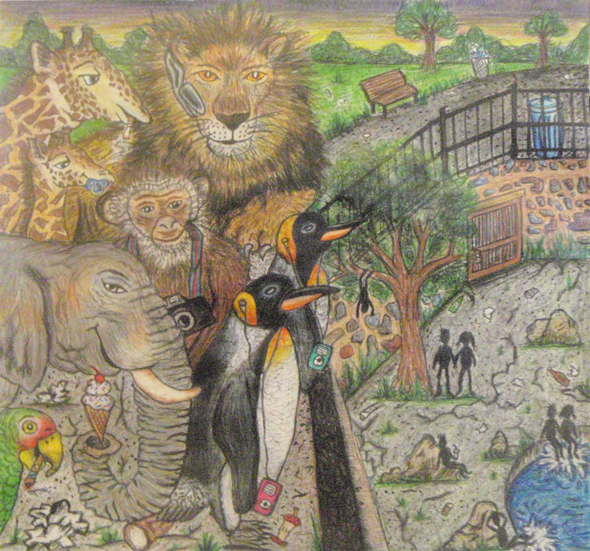The Business of Creativity
 People Zoo, Gillian Foster
People Zoo, Gillian Foster
Today I felt inspired. I felt the rush of creative adrenaline course through my thick blue veins and influence my brain and heart. At that point I picked up my lush pink scented marker and began to run it across thick bristol board. What had I written? BAKE SALE! TODAY! TODAY! TODAY! Today, I felt inspired.
When we were children, our creative abilities were limited only by our vast imaginations. The outlets our teachers suggested we use came in the form of markers, crayons, pencils, bristol board, and plain old white printer paper. With these basic tools, the whole world was at our fingertips. In kindergarten, as a starting point of creativity for such small students, finger painting with chocolate pudding was an outlet and we didn’t even know it. As we grew older, we realized that our creative abilities grew with us. In middle school the art techniques got a little more complicated; we swapped pudding for watercolours and sketched still life instead of drawing fruit with scented markers.
In high school our creative outlets branched out not only to fine art, but to photography, drama, music, and creative writing. The evolution of the creative mind and the theme of creativity itself are molded in elementary school to a progression of creative training in secondary school with the hope of creative self-study. In my youth I exposed myself not only to the artists I would later admire like Monet, Jackson Pollock or Toulouse-Lautrec, but to the immensely life-changing notion of music and music-making, as well as literature and its expressions.
Having stepped outside the realms of academia and walking into the narrow hallways of an office, I couldn’t help but notice that with every step I took, I was taking a metaphorical step back in my own maturation process. I stepped into a room that had posters marked with concepts and mission statements written in vibrant pink and neon green, outlined in purple and blue with smiley faces and doodles for flair. I will always remember that scene in Office Space when Jennifer Aniston’s character is criticized for hindering the business by not having enough flair on her serving apron. I feel like that every day.
The more “creativity” that is brought into the workplace, the better the environment will be. I say creativity with quotations because to me, mission statements and tallied point systems with team names do not really constitute true creativity. It feels more like a slap in the face for minds hungry for inspiration, dedication, and passion to come from or be influenced by real pieces of creative mastery. You can feel the passion and misery in a picture of an anonymous can-can dancer in Montematre at the turn of the century in Lautrec’s paintings. You cannot feel passion in a caricatured face of a woman angry with a customer service representative on a Power Point slide.
Why do businesses even bother injecting an already bland atmosphere with what resembles primary school creativity? It may be nice to skip down Nostalgia Lane to those days when doodling in our notebooks was fun and a good waste of time, but offices that utilize this business tactic foster an immature atmosphere. They belittle the precious commodity of creativity in a time when the 401K rules and the starving artist is literally a joke. This kind of creativity reverts back to adolescent, frivolous pieces of work, calling it a waste of time, all while mocking the time spent on genius pieces of art or literature or music by calling it out as such. Frivolity should be expressed in a piece, but it shouldn’t be the piece itself. Finding inspiration in a sign for a bake sale stretches my tolerance too thin.